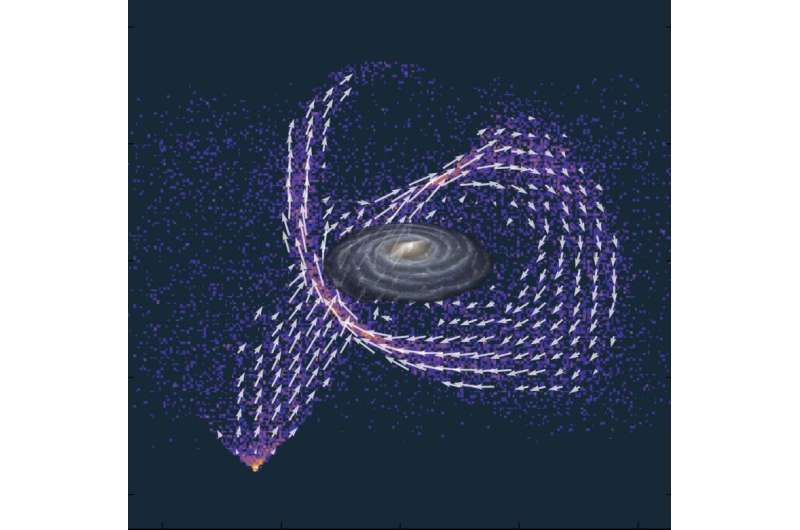Stars in the halo of the Milky Way often travel in groups

Many stars in the halo that surrounds the Milky Way travel in groups. This is the outcome of a recent analysis of data for millions of stars from the Gaia space mission. Astronomers report their discovery today in the international journal Astronomy & Astrophysics.
The Milky Way, our own Galaxy, has likely formed in part from the merging of many smaller systems. How exactly that happened, is still a puzzle. To learn more about the history of formation of the Milky Way, astronomers from the University of Groningen in the Netherlands and UC Riverside in the US, have inspected the motions of stars in the so-called Galactic halo. Stars in the halo are more pristine and spend most of their time outside of the disk-like structure that gives the Milky Way its name. It is thought that these halo stars are the stars that joined the Milky Way onboard of small galaxies.
For this study, a team led by Amina Helmi (University of Groningen) combined the vast Gaia dataset with data from the RAVE survey.
The researchers discovered that a large fraction of the halo stars travel in groups. Helmi: "This indicates that the stars indeed originate from small galaxies that were cannibalised by the Milky Way a very long time ago". The astronomers describe these groups as large flows of stars like flocks of birds traveling together through the Milky Way. "We believe there might be tens or even hundreds such flocks. At the moment, we only see small groups with just a few stars, but that is probably because we do not yet have all the necessary data".
The team of astronomers were bewildered of the behaviour of halo stars that spend most of the time in the outskirts of the Milky Way. Surprisingly more than 70% of those stars appear to be moving in the opposite sense than the vast majority of stars in the Milky Way. Such a high fraction is unexpected in current models. Helmi: "One may compare stars from the outer halo with commuters that drive the wrong way. We do not yet quite understand why."
These discoveries were made using halo stars that, in their journey through the Milky Way, are by chance currently close to the Sun. In the future, Gaia will provide us with data from stars from all over the Milky Way. Helmi: "With such data we will get many new insights on how the Milky Way formed and be able to reconstruct its genealogy tree."
More information: Amina Helmi et al. A box full of chocolates: The rich structure of the nearby stellar halo revealed byand RAVE, Astronomy & Astrophysics (2017). DOI: 10.1051/0004-6361/201629990
Journal information: Astronomy & Astrophysics
Provided by Netherlands Research School for Astronomy




















